Even Wu’s (吳宜紋) recycled wood furniture combines environmental awareness with a childlike playfulness. Wu, who trained to be an arts teacher and once worked at a kindergarten, gets inspiration for her recycled wood pieces from toys and snack food, as well as Danish furniture designers like Hans Wegner and Finn Juhl.
Wu’s signature creations are stools shaped like cookies and painstakingly carved by hand. Proceeds from the sale of the stools, which won first prize in last year’s Taiwan Crafts Design Competition (台灣工藝設計競賽), enabled Wu to leave her job in a furniture store earlier this year and focus on woodworking full-time.
Wu spends about a month on each stool, carving the cookie-shaped seat’s 46 scallops by hand with a set of carpenter rasps. She has sold 16 of the stools so far, which cost about NT$15,000 to NT$18,000 each.
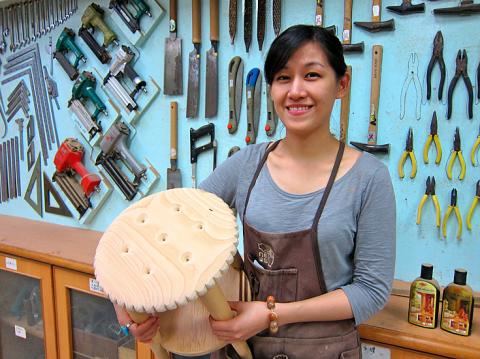
Photo: Catherine Shu, Taipei Times
Some “cookies” have tiny nibbles on the side, which are insect bites that Wu incorporates into her designs. Disappointed at first by the damage to salvaged lumber she had found or purchased, Wu discovered that the rough surface of the holes resembles the flaky, crispy texture of real crackers and cookies.
Wu first began working with wood when she was a sophomore in National Taipei University of Education’s (國立臺北教育大學) arts education program, where she was taught how to handle different materials, including metal, clay and glass.
“Metal is hard and cold, while glassblowing is extremely hot and I was scared off by the process. But wood is very quiet. Each piece has a backstory, which you can see in its markings and age rings,” says Wu, who earned a master’s degree in handicrafts last year from NTUE and took intensive woodworking courses at HDG (懷德居), a studio based in Linkou District (林口), New Taipei City.

Photo courtesy of Even Wu
Wu started working with recycled wood because she hoped it would save her money. Much of the salvaged lumber sold in Taipei is cypress (檜木), which was a common building material until harvesting was restricted in the late 1980s. Valued for its durability and fragrance, cypress recovered from demolished structures is just as expensive, if not more so, than new lumber.
“I found out it wasn’t cheaper, but I had gotten attached to using recycled wood and it’s also environmentally friendly,” Wu says.
She first became interested in environmental awareness when she was a small child. Her mother, who worked as a cleaner, spent her days off voluntarily clearing litter from the gutters and storm drains in their Kaohsiung neighborhood so they would not flood during heavy rain. Wu’s father would go to city dumps to salvage planks of wood to nail together into simple furnishings.

Photo courtesy of Even Wu
Her father drank and had a short temper, Wu says, but she felt close to him when they worked on carpentry projects together.
“I learned that you could reuse old things and that was something I thought about when I started studying handcrafts, because you are very aware of the materials in your hands,” says Wu, who enjoys telling the stories behind some of the wood she uses in her creations.
A jewelry box with a chocolate bar-shaped lid was carved out of doors from Taiwan Taoyuan International Airport, while a set of five graduated stacking stools were made from discarded juniper window frames that Wu picked up from a rubbish pile at National Taiwan University.

Photo courtesy of Even Wu
After making the cookie stools, Wu wanted to create another piece of furniture that was also inspired by food, but more abstract in design.
“I wanted the look to be like mochi, with no hard corners or lines, so it has a very soft, ‘QQ’ feel,” Wu says, referring to the popular snack made of pounded sticky rice. The smallest stool in the series is the size of a real piece of mochi, while the largest is big enough for an adult to sit on.
One of her latest projects is a series of slender coat stands with bulbous, cartoon-like branches inspired by the saplings that Wu plants on the NTUE campus each time she finishes one of her time-consuming pieces.
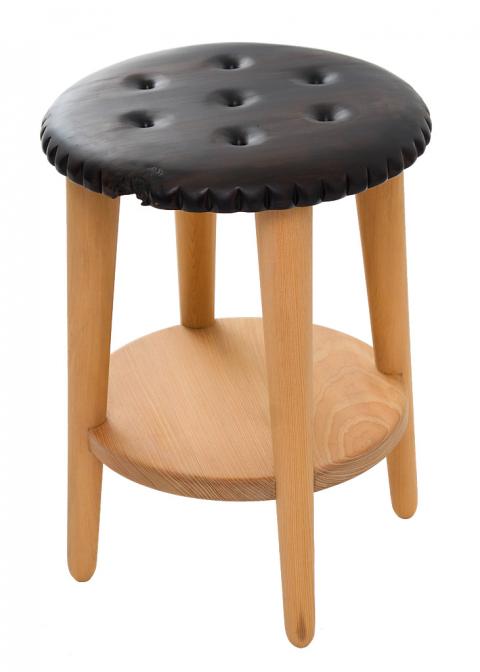
Photo courtesy of Even Wu
“It’s a tiny act and ultimately it might not make a huge difference in the world,” Wu says. “But I might as well do it.”
For more information on Wu’s pieces, visit evenwahaha.blogspot.com

Photo courtesy of Even Wu

Photo courtesy of Even Wu
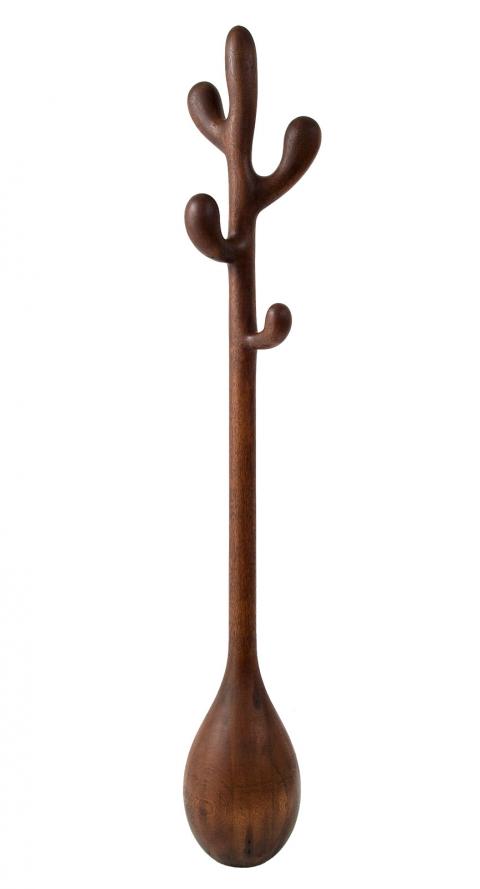
Photo courtesy of Even Wu
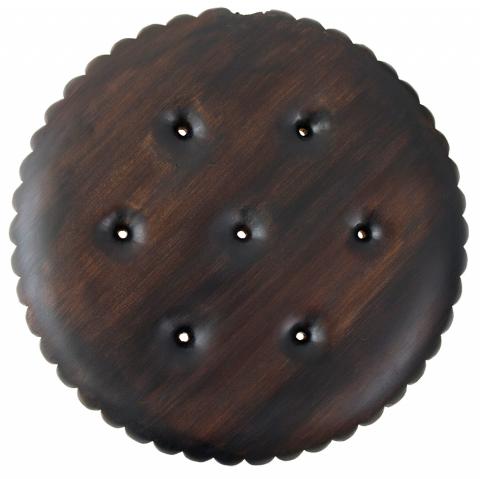
Photo courtesy of Even Wu
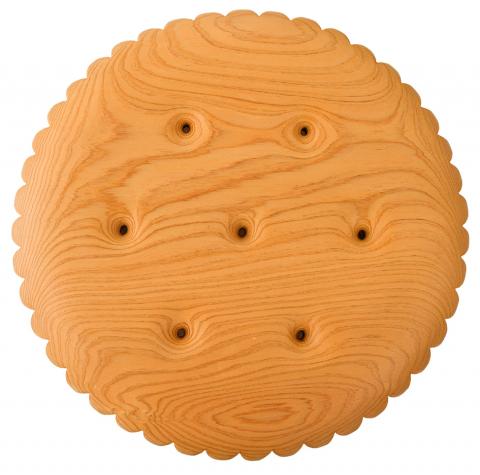
Photo courtesy of Even Wu

Nine Taiwanese nervously stand on an observation platform at Tokyo’s Haneda International Airport. It’s 9:20am on March 27, 1968, and they are awaiting the arrival of Liu Wen-ching (柳文卿), who is about to be deported back to Taiwan where he faces possible execution for his independence activities. As he is removed from a minibus, a tenth activist, Dai Tian-chao (戴天昭), jumps out of his hiding place and attacks the immigration officials — the nine other activists in tow — while urging Liu to make a run for it. But he’s pinned to the ground. Amid the commotion, Liu tries to

A dozen excited 10-year-olds are bouncing in their chairs. The small classroom’s walls are lined with racks of wetsuits and water equipment, and decorated with posters of turtles. But the students’ eyes are trained on their teacher, Tseng Ching-ming, describing the currents and sea conditions at nearby Banana Bay, where they’ll soon be going. “Today you have one mission: to take off your equipment and float in the water,” he says. Some of the kids grin, nervously. They don’t know it, but the students from Kenting-Eluan elementary school on Taiwan’s southernmost point, are rare among their peers and predecessors. Despite most of

A pig’s head sits atop a shelf, tufts of blonde hair sprouting from its taut scalp. Opposite, its chalky, wrinkled heart glows red in a bubbling vat of liquid, locks of thick dark hair and teeth scattered below. A giant screen shows the pig draped in a hospital gown. Is it dead? A surgeon inserts human teeth implants, then hair implants — beautifying the horrifyingly human-like animal. Chang Chen-shen (張辰申) calls Incarnation Project: Deviation Lovers “a satirical self-criticism, a critique on the fact that throughout our lives we’ve been instilled with ideas and things that don’t belong to us.” Chang

Feb. 10 to Feb. 16 More than three decades after penning the iconic High Green Mountains (高山青), a frail Teng Yu-ping (鄧禹平) finally visited the verdant peaks and blue streams of Alishan described in the lyrics. Often mistaken as an indigenous folk song, it was actually created in 1949 by Chinese filmmakers while shooting a scene for the movie Happenings in Alishan (阿里山風雲) in Taipei’s Beitou District (北投), recounts director Chang Ying (張英) in the 1999 book, Chang Ying’s Contributions to Taiwanese Cinema and Theater (打鑼三響包得行: 張英對台灣影劇的貢獻). The team was meant to return to China after filming, but